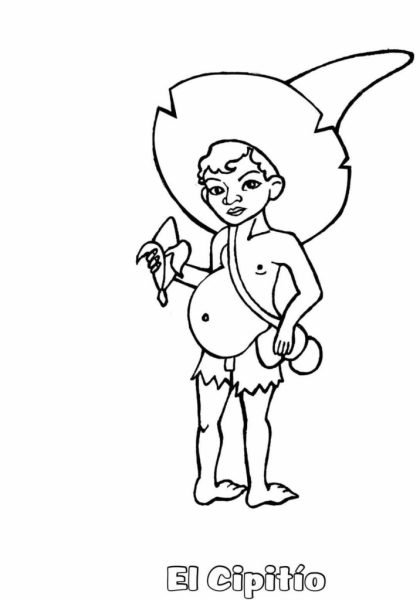El Salvador is not just the tiniest country in Central America with a population of 6,391,072
currently. We can find a diversity of food, traditions, and also a distinct accent. Even If
Salvadorans speak Spanish, they conserve words from the language Nahuatl and interesting
legends.
There are many legends in El Salvador that your grandparents will tell you about, and you will
learn about too. For example:
La Siguanaba
The Salvadoran legend of La Siguanaba says
that the woman, originally called Sihuehuet
(beautiful woman), was a peasant girl that

ascended to queen using her charms (and a
witch’s brew) to lure into marriage with
Tlaloc’s son, Yeisun, who was a Nahualt
prince. After to lure into marriage with
Tlaloc’s son, Yeisun, who was a Nahualt
prince. After the wedding her husband went
to war, and Siguanaba had affairs with other
men, and soon she gave birth to Cipitio, the
child of this relationship. She was a bad
mother, neglecting her son, leaving him alone
to meet her lovers, To inherit the throne she concocted a plot
using another magic potion to poison her
husband Yeisun during a festival, and as a
result she claimed the throne for her lover.
She was cursed for these reasons, She was
cursed with what was most valuable to her,
her beauty. From that day on she might seem
beautiful at first but after trying to have a
conversation with her she would reveal her
ugly and hideous face.
They found her washing clothes on the rocks
on the banks of the river with all her hair in her
face.
Maria Ester said: “She used to take showers in the river “Agua Chuca” and these boys
who were very drunk approached the river because they saw a curvy woman without
her bra on. When she removed her hair from her face they saw a very beautiful
woman and after a few seconds her face was horrible and creepy. They both started
running and she followed them, laughing out loud.”
El Cipitio
Her son is also a famous legend in El 
Salvador is “El Cipitio”.When his mother was
cursed for eternity, he also was cursed. He
was to remain a child forever and this would
taunt his mother La Siguanaba. He is a
benevolent creature, one that is just
mischievous, sort of a trickster.
He has the appearance of a child of 8 to 10
years old, he wears a huge hat and
backwards feet, making it impossible to
track him down. He loves to wallow through
ashes and eats them too. He hides in
bushes, by rivers and creeks, waiting for
young women who take baths there, he
throws compliments, flowers and rocks
occasionally. His huge belly derives from
malnourishment and his love for eating
ashes, which he had to do because his
mother, la Siguanaba, neglected him. He is
often depicted eating bananas and is said to
have the ability to teleport from one place
to another.
Adults cannot see him, but little kids can. If el
Cipitio chases you, you must eat on a toilet to get
rid of him, because he hates disgusting habits.
His name is derived from the word cipit or cipote,
meaning child.
Maria Ester said: “My grandma told me that he broke her comal ( a flat slab of sandstone
used as a griddle) Even though I cover them, he wants to eat the ashes.
(This is the way that salvadorans prepared our typical food “pupusas”. We cook pupusas in a “comal”).
There are more of these legends in El Salvador that your grandparents will tell you about. 
On a hot, very warm afternoon when little children enjoy snacks with soft drinks inside
plastic bags with straws.
In the end, we no longer care if they are real or not, these legends have been told for years
by our dearest relatives and they claim to have lived them. How can we not believe them?










